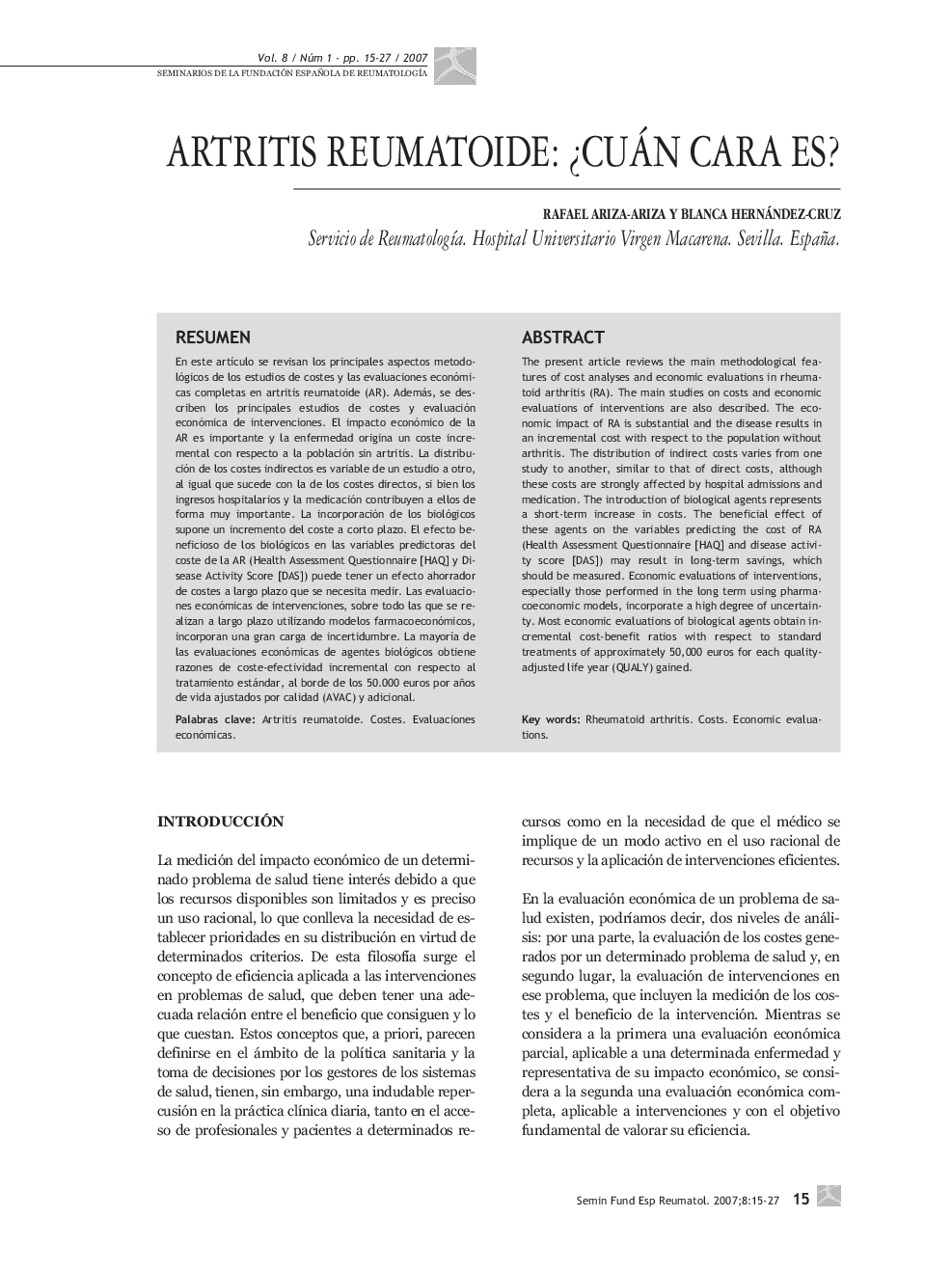| Article ID | Journal | Published Year | Pages | File Type |
|---|---|---|---|---|
| 3391201 | Seminarios de la Fundación Española de Reumatología | 2007 | 13 Pages |
Abstract
The present article reviews the main methodological features of cost analyses and economic evaluations in rheumatoid arthritis (RA). The main studies on costs and economic evaluations of interventions are also described. The economic impact of RA is substantial and the disease results in an incremental cost with respect to the population without arthritis. The distribution of indirect costs varies from one study to another, similar to that of direct costs, although these costs are strongly affected by hospital admissions and medication. The introduction of biological agents represents a short-term increase in costs. The beneficial effect of these agents on the variables predicting the cost of RA (Health Assessment Questionnaire [HAQ] and disease activity score [DAS]) may result in long-term savings, which should be measured. Economic evaluations of interventions, especially those performed in the long term using pharmacoeconomic models, incorporate a high degree of uncertainty. Most economic evaluations of biological agents obtain incremental cost-benefit ratios with respect to standard treatments of approximately 50,000 euros for each qualityadjusted life year (QUALY) gained.
Related Topics
Health Sciences
Medicine and Dentistry
Immunology, Allergology and Rheumatology
Authors
Rafael Ariza-Ariza, Blanca Hernández-Cruz,
